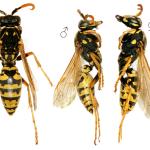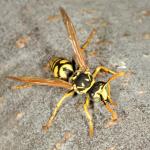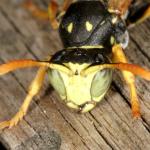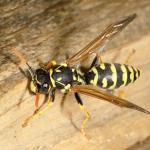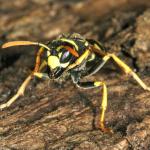There have been two names applied to this species which is possibly an intermittent resident in Britain: Polistes dominula and P. gallicus. Confusingly, the true P. gallicus (Linnaeus) has also been found in Britain, but only as a vagrant. The best characterised instance of a reproductive and long-term colony was one found by the author in the roof of the Orangery at Ham House, Petersham, Surrey. Here there were many nests under the tiles and this situation persisted at least between 2003 and 2010; they may still be there. A number of other records may well relate to reproductive colonies, these are mostly in the Thames Corridor (Baldock & Dvořák, 2009), whilst other records are clearly casuals with imported fruit or vegetables.
Whilst vagrants carried in with vegetables or fruit may turn up anywhere, confirmed records of breeding populations are largely confined to the Thames Corridor in south-eastern England.
It is widely distributed in southern and central Europe.
This species is not regarded as scarce or threatened.
Nesting areas seem to be closely associated with human habitation.
April to October, or even later.
A wide range of insect prey is taken.
Social, with nests lasting from April to October, or longer. These mainly produce worker females but males are also produced towards the end of the year. Females which are mated in the early autumn hibernate, the males and unmated worker females die. Workers may mate and become egg-laying queens themselves, whilst two mated females may jointly found a nest, with one becoming the dominant egg-laying individual.
Visits a wide variety of flowers.
No data available for Britain.
2019


